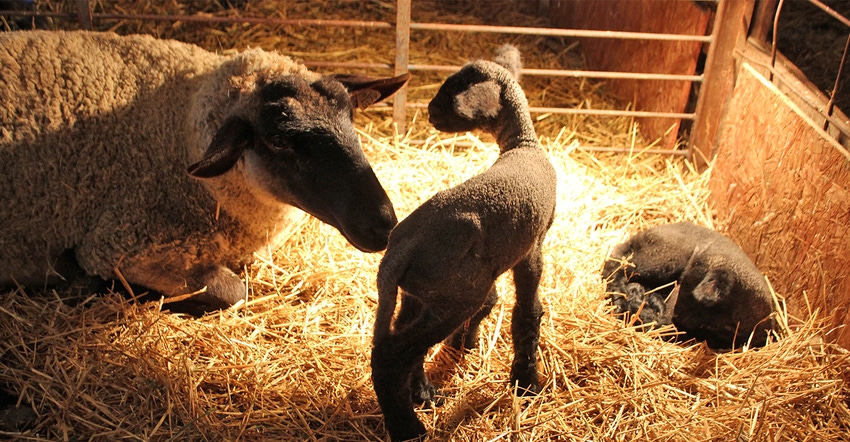January 25, 2017

There I was on my knees in the straw, trying to resuscitate a lamb. About five years ago, my chance of bringing that lamb back from the brink of death was roughly 50%. However, since heeding a cattleman's advice, I've boosted that to at least 90% for the births where I've assisted ewes.
This night was no different. The ewe was in distress. I already helped her deliver a large lamb stuck in the birth canal. Then she presented with a second lamb, but it was all wrong. Instead of coming out with two front feet and the nose, the little lamb had one front foot and the nose. We were missing a foot. So, I reached into the horn and found the foot cocked back at the knee. I gently turned the lamb, moved the little foot forward and started to pull. The lamb came out covered in fluid and was unresponsive.
Many sheep and cattle producers have their own ideas of what works when trying to save a lamb. Some swing the lambs to relieve fluid buildup. But four years ago, while attending a cattle grazing conference, a beef producer explained how he resuscitates calves. He noted that for one thing, hanging calves to get fluid out does no good. In fact, it makes it more difficult for the calf to breathe by forcing its organs down on its chest. He added that the fluid that does come out is from the stomach, not the lungs, so it doesn't help.
He explained that it is better to have the calf sitting up in a frog-legged position — both front feet bent and under the chest and back legs pointed forward alongside the body. In this position, both lungs can get air equally. He noted that it was important to extend the neck forward to open up the airways. It mimics the lamb actually standing.
It was a lightbulb moment for me. Now, I had been one that would allow a lamb to lie on its side while I cleaned it off, never realizing that I was not helping open up the airways. I would rub excessively while the lamb lay there, to no avail. Some made it; others did not. So I thought the cattleman's advice was worth a try.
I shared the process with my husband, and that year we began doing this one simple animal husbandry tip. On the farm economic side, we both believe it has changed our survival rates. On the personal side, my husband no longer has to watch me walk away in tears because I couldn't save one. He no longer has to answer that one question I repeated over and over: "Could I have done something differently?"
Now we use a cattleman's method during any assisted birth, knowing that we have done our best to revive a lamb.
You May Also Like




